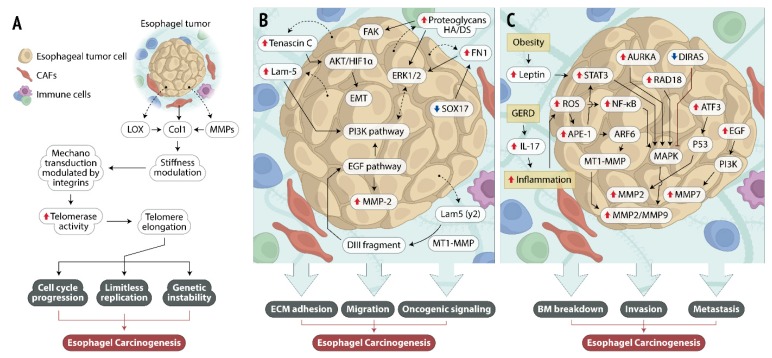Figure 2.
Mechanistic pathways involved in the reciprocal interactions between esophageal cancer (EC) cells and extracellular matrix (ECM). The figure illustrates the main molecules and signaling pathways altered along the interaction between tumor cells and ECM, which may represent fundamental steps for esophageal carcinogenesis. (A) Lysyl oxidase (LOX)- and matrix metalloproteinase (MMP)-altered expression in esophageal tumors is involved in the turnover of collagen molecules, resulting in ECM stiffness modulation that, in turn, may enhance telomerase activity, resulting in activation of signaling pathways involved with malignant phenotype acquisition, such as cell cycle progression, limitless replication, and genetic instability. (B) Esophageal tumor cell release increased levels of ECM adhesion molecules that activate intracellular signaling pathways involved with cell survival, enhanced cellular migration, and activation of oncogenic signaling. (C) Risk factors associated with esophageal tumor development (obesity and gastro-esophageal reflux disease—GERD) lead to an increase in leptin and interleukin 17 (IL-17) levels, which generates an inflammatory environment. The alterations in leptin and inflammation levels modulate the expression of several intracellular molecules that, together with other altered signaling pathways, converge to the activation of MMP expression and activity, entailing basement membrane (BM) breakdown, cellular invasion, and metastasis. Dotted arrows: molecules secreted by esophageal tumor cells; solid arrows: activation of cellular events or intracellular signaling pathways; red solid arrow: overexpressed molecules; solid blue arrow: underexpressed molecule.

